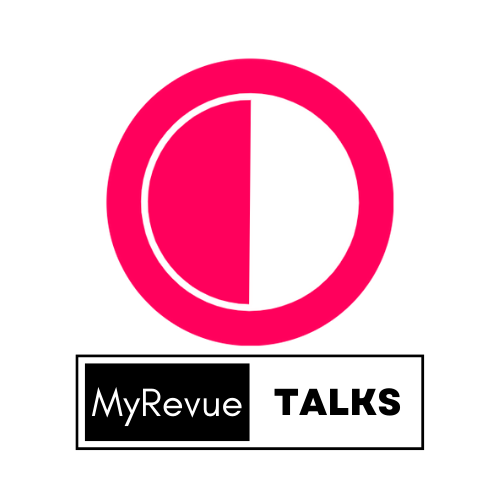User-Generated Content: Building Brand Advocacy from the Ground Up
When users create and share content related to a brand, it signifies their support and enthusiasm,turning them into brand advocate

Written by Shivangi
Updated on 12/07/2023
<p class="MsoNormal">User-generated
content (UGC) can be a powerful tool for building brand advocacy from the
ground up. When users create and share content related to a brand, it signifies
their support and enthusiasm, turning them into brand advocates. Here's how UGC
can help build brand advocacy:<o:p></o:p></p><p class="MsoNormal"><br></p>
<p class="MsoNormal">Fostering a sense
of ownership: When users contribute UGC, they feel a sense of ownership and
pride in their involvement with the brand. This ownership leads to a stronger
connection and affinity, motivating users to advocate for the brand and share
their positive experiences with others.<o:p></o:p></p><p class="MsoNormal"><br></p>
<p class="MsoNormal">Amplifying positive
word-of-mouth: UGC serves as organic word-of-mouth marketing. When users create
content about a brand and share it with their networks, they are essentially
endorsing the brand to their friends, family, and followers. Positive UGC acts as
social proof and can significantly influence others' perceptions and decisions,
generating a ripple effect of advocacy.<o:p></o:p></p><p class="MsoNormal"><br></p>
<p class="MsoNormal">Building trust and
credibility: User-generated content is seen as more authentic and trustworthy
compared to branded content. When potential customers see UGC from real users,
it helps build trust in the brand. Trust is a key component of advocacy, as
people are more likely to advocate for brands they believe in and trust.<o:p></o:p></p><p class="MsoNormal"><br></p>
<p class="MsoNormal">Engaging with the
community: UGC fosters a sense of community and engagement around a brand. When
users participate in creating and sharing content, they become part of a larger
community of like-minded individuals. This sense of belonging strengthens their
connection to the brand and motivates them to advocate for it.<o:p></o:p></p><p class="MsoNormal"><br></p>
<p class="MsoNormal">Leveraging social
influence: UGC can leverage social influence to build brand advocacy. When
users with a significant following or influence create and share UGC, their
endorsement can have a substantial impact on their audience's perception of the
brand. Collaborating with influencers or brand advocates to create UGC can
amplify advocacy efforts and expand brand reach.<o:p></o:p></p><p class="MsoNormal"><br></p>
<p class="MsoNormal">Encouraging user
participation: Actively encouraging and recognizing user participation through
UGC can foster a culture of advocacy. Brands can run UGC campaigns, contests,
or challenges that incentivize users to create and share content. Recognizing
and featuring user-generated content on brand channels can further motivate
users to advocate for the brand.<o:p></o:p></p><p class="MsoNormal"><br></p>
<p class="MsoNormal">Listening and
responding to users: Brands that actively listen and respond to users who
create UGC demonstrate their commitment to their customers. Engaging with UGC,
acknowledging user contributions, and responding to their feedback builds a
stronger relationship between the brand and its advocates. This level of
responsiveness and interaction enhances brand advocacy.<o:p></o:p></p><p class="MsoNormal"><br></p>
<p class="MsoNormal">To effectively
build brand advocacy through UGC, consider these strategies:<o:p></o:p></p><p class="MsoNormal"><br></p>
<p class="MsoNormal">Create a
UGC-friendly environment by providing platforms or channels for users to easily
create and share content.<o:p></o:p></p>
<p class="MsoNormal">Implement
moderation and curation practices to maintain quality and relevance of UGC.<o:p></o:p></p>
<p class="MsoNormal">Encourage and
incentivize users to create UGC through contests, rewards, or recognition
programs.<o:p></o:p></p>
<p class="MsoNormal">Showcase and
amplify UGC on brand channels, such as websites, social media, or email
newsletters.<o:p></o:p></p>
<p class="MsoNormal">Engage with users
who create UGC by responding, sharing, or featuring their content, fostering a
sense of community and appreciation.<o:p></o:p></p>
<p class="MsoNormal">Leverage
influencers or brand advocates to create and share UGC, expanding brand reach
and influence.<o:p></o:p></p><p class="MsoNormal"><br></p>
<p class="MsoNormal">By embracing
user-generated content and nurturing brand advocacy, brands can harness the
power of their loyal customers to advocate for their products or services.
Building a community of advocates from the ground up creates a strong
foundation for long-term success and growth.<o:p></o:p></p>
<p class="MsoNormal"><span lang="EN-GB"> </span></p>
